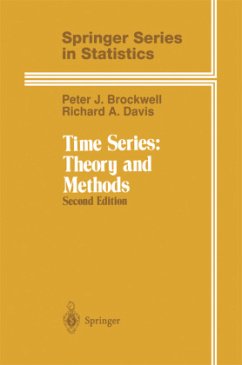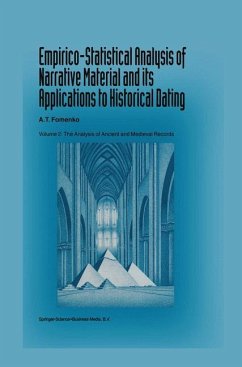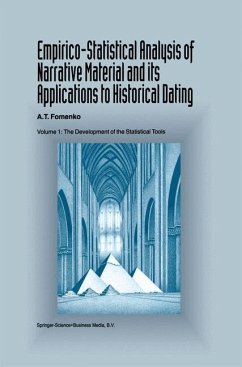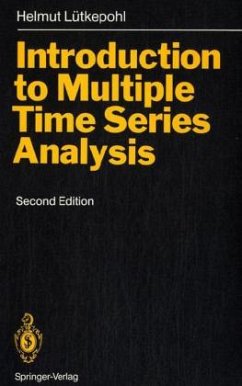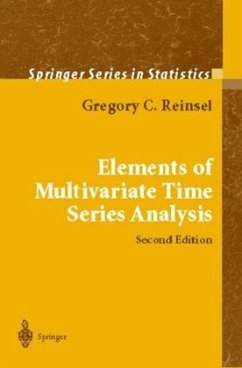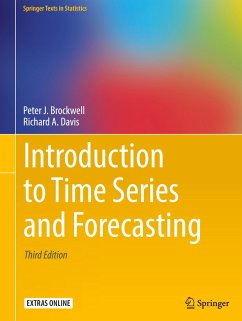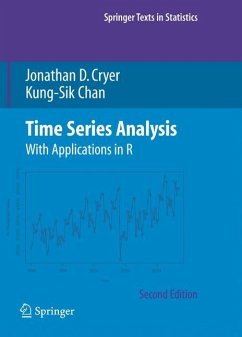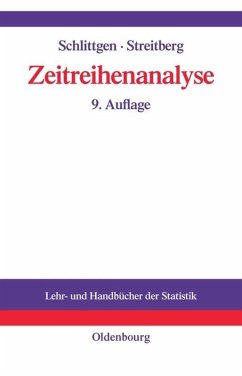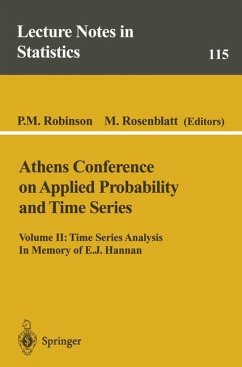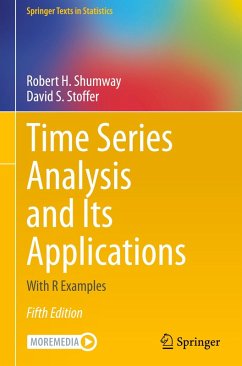
Tools for Constructing Chronologies
Crossing Disciplinary Boundaries
Herausgegeben: Buck, Caitlin E.; Millard, Andrew R.

PAYBACK Punkte
18 °P sammeln!
Tools for Constructing Chronologies focuses on ways of getting more out of existing chronological data by careful analysis. It surveys a range of cutting edge methods in chronology construction and seeks to enable cross-disciplinary fertilisation of ideas.
The specially invited papers cover a range of timescales, from the perspectives of a number of disciplines. The methods used range from complex statistical treatments, to (non-statistical) considerations of how to systematically represent relative dating information. Each chapter can be read alone, but they are also carefully cross-referenced. The editors' introductory essay provides a cross-disciplinary overview of the state of chronology construction methods, and highlights the links between them.
This book will appeal to a wide range of researchers, scientists and graduate students using chronologies in their work; from applied statisticians to archaeologists, geologists and paleontologists, to those working in bioinformatics and chronometry.
From the reviews:
"Here's a good book on 'dating' that, luckily, won't find its way to the self-help section of your local bookstore!" - Journal of the American Statistical Association, December 2005
The specially invited papers cover a range of timescales, from the perspectives of a number of disciplines. The methods used range from complex statistical treatments, to (non-statistical) considerations of how to systematically represent relative dating information. Each chapter can be read alone, but they are also carefully cross-referenced. The editors' introductory essay provides a cross-disciplinary overview of the state of chronology construction methods, and highlights the links between them.
This book will appeal to a wide range of researchers, scientists and graduate students using chronologies in their work; from applied statisticians to archaeologists, geologists and paleontologists, to those working in bioinformatics and chronometry.
From the reviews:
"Here's a good book on 'dating' that, luckily, won't find its way to the self-help section of your local bookstore!" - Journal of the American Statistical Association, December 2005
In summary, Bayesian methods are already seen by many as an essential tool to aid in formal chronology building in archaeology. At present, most researchers use packages like OxGal and BGal to make use of such tools and typically see them as radiocarbon calibration tools (indeed both are described as such on their own WWW welcome pages). On reflection, however, I think that it is clear that these packages offer more than just calibration, they are modest Bayesian chronological data interpretation environments. Given this observation, and the fact that the current tools are built on a sound foundation offlexible and scalable theory,I think that we are in a good position to move towards fully integrated tools for Bayesian chronology building. All of the current and planned research projects outlined above will contribute to the extension of the framework in one way or another. Since such work is motivated by a desire to provide practical solutions to real, current and pressing issues associated with chronology building, I feel sure that we can look forward to many more years of fast moving, productive and practical research in Bayesian chronology building. References Ammerman, A. J. and Cavalli-Sforza, 1. L. (1971). Measurement of the rate of spread of early farming in Europe. Man , 6, 674-688. Ammerman, A. J. and Cavalli-Sforza, 1. L. (1984). The Neolithic transition and the genetics of populations in Europe. Princeton University Press, Princeton. Anderson, A. , Allingham, B. and Smith, I. (1996a).





